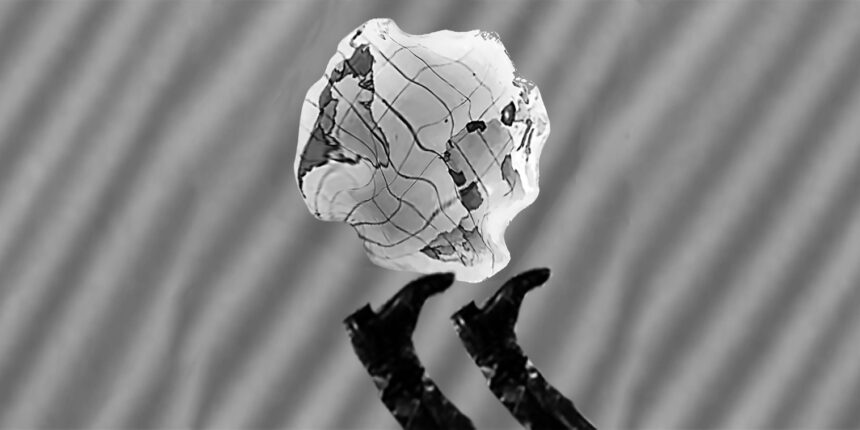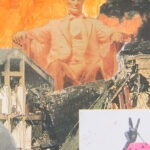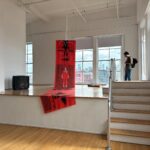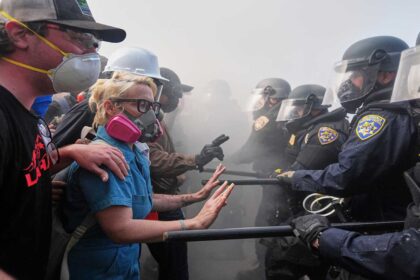FIELD Global Reports from the Former East: A Laboratory of Illiberalism and Resistance in the Unpresent
Greg Sholette
In the United States it has already been six months since Donald Trump’s return to the presidency, and resistance has at best been muted. Only in the past couple of months have national mass protests against his administration been organized including the No Kings and Hands Off rallies in many cities. One of the puzzles regarding MAGA 2.0 is what political and cultural template it is following. At times it seems straight out of far-Right nationalist ideology, bordering, if not crossing over into, Fascist territory. At other times it appeals to working-class populations including labor unions. Then there are the extreme evangelical Christian references to apocalyptic end-times that are only outmatched in their bizarreness by Trump’s tweeted claim that former President Biden died and was replaced by a look-alike robot years ago, or Marjorie Taylor Green’s warning about space-based laser weapons operated by some clandestine Jewish cabal. The word I am using to describe these untimely times that we now live in is the Unpresent: a temporal inversion where time itself appears flipped inside-out, leaving us suspended in a doubly uncanny present that feels simultaneously familiar and utterly transformed. I will have more to say about this in an upcoming book, but meanwhile what does this time-out-of-joint look and feel like, and how can artists and cultural workers understand it and confront it.
The FIELD “Global Reports” series was first initiated in 2019 [https://field-journal.com/category/issue-12-13/]. FIELD #30 (2025) continues the new series of updated global reporting, provided by significant cultural commentators from across the world. They offer insights into circumstances unfolding now, and in most instances, in their own backyards, so to speak. The three previous FIELD Global Report Updates from the beginning of this year—Cristina Pratas Cruzeiro and Raquel Ermida on Portugal [https://field-journal.com/issue-29-winter-2025/from-marginality-to-power/], Marco Baravalle on Italy [https://field-journal.com/issue-29-winter-2025/8591/] and Oliver Ressler on Austria [https://field-journal.com/issue-29-winter-2025/austria-on-the-far-right-frontline/]—offered substantial insights into Western European nations that have, since the end of World War Two, been squarely within the liberal and social-democratic tradition of capitalist economic management. Their recent electoral movement towards far-Right, anti-immigrant and anti-free speech policies is therefore not only disconcerting, but a setback for expanding inclusivity and justice, as well as movement towards a fully emancipated future.
In this issue, we present reports from three nations of the Balkans and the former socialist East, including post-Yugoslavia with Jon Blackwood and Bojan Ivanov on North Macedonia [Field Report—North Macedonia, https://field-journal.com/issue-30-spring-2025/field-report-north-macedonia/] and Vladan Jeremić and Rena Raedle on Serbia [Tools for Dismantling the Oligarchy—Student Protests in Serbia and Their Creativity, https://field-journal.com/issue-30-spring-2025/tools-for-dismantling-the-oligarchy-student-protests-in-serbia-and-their-creativity/], as well as reporting on nearby Hungary under the autocratic regime of Viktor Orbán and the far-Right Fidesz Party by Gábor Erlich [Report from Hungary, https://field-journal.com/issue-30-spring-2025/report-from-hungary/]. Returning to my opening remark about the puzzling politics of MAGA 2.0, the reader will find a number of significant clues regarding our own situation in the U.S. in these reports. This includes, from North Macedonia, the new nationalist-Right VMRO-DPMNE government’s subordination of the country’s cultural sector to tourism, as it defunds both LGBTQ+ and feminist organizations and pushes artists into ever-more precarious living circumstances. Efforts made in the capital of Skopje to literally cover-up the city’s famous 1960s Brutalist architecture with Disneyesque facades that do not even rise to the level of Neoclassicism (I witnessed this on a trip there in 2023) have, of course, a sinister resonance with Trump’s “Beautiful Federal Civic Architecture” executive order directed precisely against such Modernist building styles. In Serbia we find a tragic railway collapse sparking resistance to the nation’s ultra-conservative government through horizontal organizing, the establishment of fugitive autonomous zones of defiance, and acts of symbolic opposition largely led by students. In contrast to Serbia’s bottom-up resistance, Hungary’s top-down cultural warfare involves sixteen years of systematic capture by the nationalist-Right and the establishment of an iPMC (illiberal Professional-Managerial Class) of cultural elites. It’s no wonder that Hungary has become the laboratory for the expanding hegemony of the international far-right cultural movement, including MAGA and such ultra-conservative blueprints as the Heritage Foundation’s Project 2025.

Knowledge, combined with on-the-ground information, and with critical analysis, continues to be the Left’s most important tool set for understanding and combating the spread of autocratic politics. It is in that spirit FIELD offers these Global Report Updates, with the next set for Fall 2025 (Issue #31) focusing on Germany, Turkey, and India. In upcoming issues, as resistance grows to this new authoritarianism, FIELD will continue adding reports to keep you informed, prepared, and ready to protest and endure.











